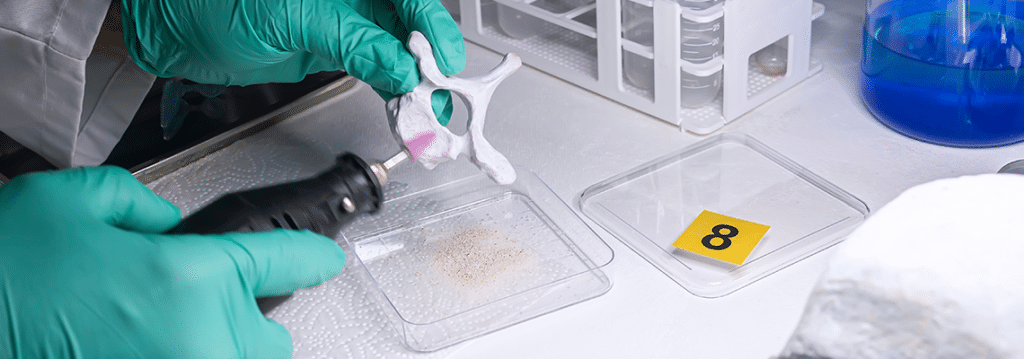International team finds INNULS tool overcomes STR limitations for degraded samples
February 6, 2018
DNA forensics labs have long struggled to analyze highly compromised evidence using short tandem repeat (STR) loci. Retrotransposable element insertion polymorphisms, or INNULs, have shown promise as an alternative for these specific sample types. But INNULs analysis raised its own challenges that, until now, prevented its application as a multiplexed marker system.
A new study by an independent research team shows that labs can move forward with confidence, even on highly degraded samples, with a commercially available INNULs tool. The study, published in the January 2018 issue of The International Journal of Legal Medicine, corroborated the INNULs-based InnoTyper® 21 system as “a useful complement to standard STR kits.”
STR analysis is well-established as a useful approach to comparing sequences in forensic biological evidence. Its shortcomings, however, stem from STRs’ large amplicon size. This makes the loci a poor tool for analyzing DNA samples with significant degradation or a low copy number. In addition, STRs’ high mutation rates make kinship tests a poor application.
Mitochondrial DNA (mtDNA) sequencing is currently the standard for degraded samples such as old human remains and hair shafts. But mtDNA’s low discrimination power and high labor intensity renders it less than ideal for sequencing. Plus, mtDNA analysis requires a specialized workflow, and it can’t differentiate offspring of the same maternal lineage.
A third solution, INNULs-based sequencing, has long held promise. The INNULs polymorphisms are non-coding, repetitive genomic sequences. They are comprised of long interspersed nuclear elements averaging 1 kb in length and short interspersed nuclear elements (SINEs) at 100-300 bp.
The significant difference in amplicon length creates a challenge, decreasing efficiency and increasing allele dropout. This challenge has hampered INNULs’ application as biomarkers—until now. The InnoTyper 21 system’s novel “mini-primer” design overcomes the size difference by positioning Alu, a type of SINE, primers at the junction of the insertion site, allowing the kit to detect specific INNUL targets. Furthermore, InnoTyper 21 is significantly less labor-intensive than mtDNA sequencing and does not require a specialized workflow.
“This strategy generates small amplicons of almost the same size and can type highly degraded DNA samples,” according to a research team led by R. S. Moura-Neto of Brazil’s Laboratório de Biologia Molecular Forense at the Universidade Federal do Rio de Janeiro. The research team—comprised of DNA forensics experts in Brazil, the U.S., and Saudi Arabia—tested the efficiency of the InnoTyper® 21 markers in a population sample, as well as one highly compromised sample from the Rio de Janeiro police. With InnoTyper 21, the researchers were able to produce a full INNUL profile of even the degraded police evidence.
The study found no significant departures from Hardy-Weinberg equilibrium after the Bonferroni correction (α′ ≈ 0.05/20, p < 0.0025) and no significant linkage disequilibrium between markers. The results showed that InnoTyper 21 is discriminating, and the study corroborated the tool’s suitability for human identification with both distinct ethnic groups and admixed populations.
“This outcome indicates that INNULs are a useful set of markers and can complement conventional STRs, especially for challenged biological evidence such as those involving the identification of human remains, hair shafts, paraffin-embedded tissues, and other sample types,” according to the study.
Innotyper 21’s short amplicon size range is the key to its high sensitivity, high tolerance to degradation and inhibition, and high discrimination power. The amplicon size range of the kit’s markers is considerable smaller than commonly used STR kits. This gives InnoTyper 21 an advantage for forensic samples that have been previously untyped, even with mini-STR analysis.
Let InnoTyper 21 unlock the potential of your degraded and difficult samples today. Click here to try it in your lab!

